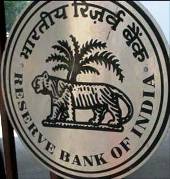 | « Back to article | Print this article |
 A Reserve Bank of India committee’s suggestion that banks could consider a 30-year loan product will be a relief for many home borrowers, especially the young ones.
A Reserve Bank of India committee’s suggestion that banks could consider a 30-year loan product will be a relief for many home borrowers, especially the young ones.
Reason: It is a fixed-rate product.
At present, fixed-rate borrowers have few options.
While some banks offer both fixed and floating rates with a differential of around 200 basis points or more, others offer a short-term, five-year fixed option.
Some like the country's largest lender, the State Bank of India, do not even have a fixed option.
Under such circumstances, a ‘good’ fixed rate option for the long term will be quite welcome.
Experts say, the difference between floating and fixed rate should not be more than 100 basis points to attract borrowers.
It will benefit young buyers especially since the average age of home loan borrowers has fallen quite sharply in the past decade -- from 35-40 years to 25-30 years.
A long-term fixed product will help them plan their finances much better.
It may also bring down defaults, as Mohan Jayaraman, Managing Director, Experian Credit Info, puts it, because hike in interest rates is the biggest reason for most home loan defaults.
However, there will be a flip side to such loans.
Locking into a fixed rate loan for such a long tenure also implies that the interest payout will be higher.
For example, if you take a 15-year home loan of Rs 50 lakh (Rs 5 million) at 10 per cent, the equated monthly instalment will be Rs 53,730 and total interest payout Rs 47 lakh (Rs 4.7 million).
In comparison, if you take the same amount of loan and at the same rate of interest but for 30 years, the EMI falls to Rs 43,878, but the interest payout is much higher at over Rs 1 crore (Rs 10 million).
Clearly, from an interest payout perspective, the lower term loan makes much more sense.
But, the EMI for the 30-year loan is a good Rs 10,000 less per month. Many young borrowers will feel more comfortable with this option.
Borrowers always have the option of prepaying loans.
But there is a problem: There is a prepayment penalty on fixed rates unlike floating rates.
However, even if the penalty is at two per cent, it could be beneficial. In case of a 30-year loan, if one wishes to prepay after 15 years, the outstanding would be Rs 41 lakh (Rs 4.1 million).
The penalty: Rs 82,000.
Even the K K Vohra committee, which was set up to assess the feasibility of introducing such long-term fixed rate loans, has suggested the prepayment penalty should not be too high to make these products unattractive.
Ram Sangapure, general manager, Central Bank of India, explains that the regulator wants banks to issue two types of loans.
One can be a 30-year fixed rate loan product, whereas the other one will come with a reset clause.
Bankers, however, are not too keen on long-term fixed products because there aren’t many long-term products where they can invest in.
To resolve this, the committee has said that banks could issue long-term bonds with minimum maturity of five years to generate long-term resources.
It has also suggested that investors should be encouraged to invest in five-year deposits -- that provide tax benefits now.
If implemented, a long-term fixed rate would certainly help many buyers who wish to purchase a property by improving their purchasing power.